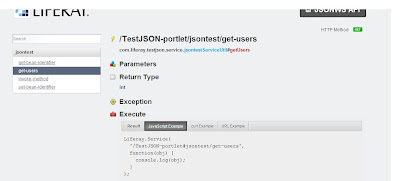Refreshing the portlet through the javascript
Some times it may require our portlet when some action performed. We can refresh liferay portlet through the javascript. <script type="text/javascript"> jQuery(document).ready(function() { Liferay.Portlet.refresh('#p_p_id_ testjson_WAR_testjson _'); } </script> Bold word is the portlet name
